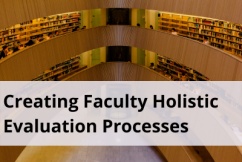Student Learning Experience Questionnaires (SLEQ), previously, āStudent Ratings of Instruction [SRI]ā) are recognized as an essential component of evidence from students. The majority of credit courses at Dalhousie University are mandated by senate to collect SLEQ feedback, so student feedback in this form is readily available as a source of evidence from students. The questionnaire includes seven Likert-scale and two open-ended questions. They may also include additional questions, added and personalized by an individual faculty member to seek specific feedback on some aspect of their course, or by a department to facilitate course and/or program development.
SLEQ as evidence is most effective when provided with context (e.g. class size, class type, year-level, subject), relevant statistics (e.g. response rate), and represents teaching over multiple courses and years (where possible). They are also more useful when faculty and students are engaged in the process. Most teaching dossiers include some self-reflective comments about student evaluations in the main body of the dossier, as well as the complete SLEQ data in one of the appendices. If your teaching experience is extensive, in terms of the number of years or the variety of courses taught, consider including an āat-a-glanceā table or graph, using the most relevant data to give your reflections some context. Suggestions for including student feedback in a dossier is provided below under "Tips for Including Student Comments as Evidence" and our Evidence from Self pages offer more guidance on how to reflect on the variety of evidence of teaching effectiveness.
More detailed information and resources for SLEQ are available on the Student Learning Experience Questionnaire website, and include:
Before engaging in reflection on student feedback, presenting SLEQ data as evidence, or reviewing SLEQ as part of a teaching dossier, we highly recommend you review the interpretation and statistics summaries provided as part of the SLEQ website.

